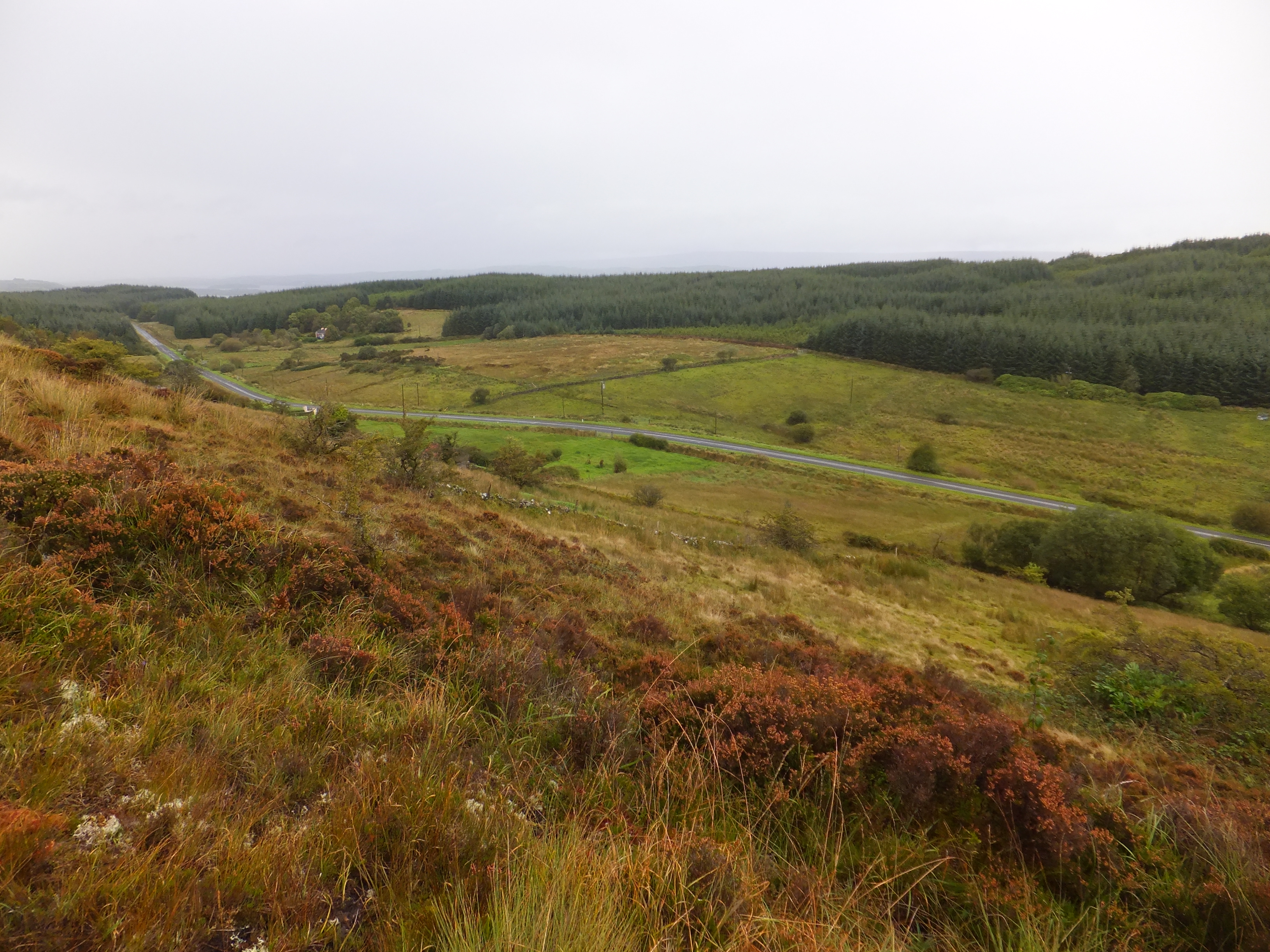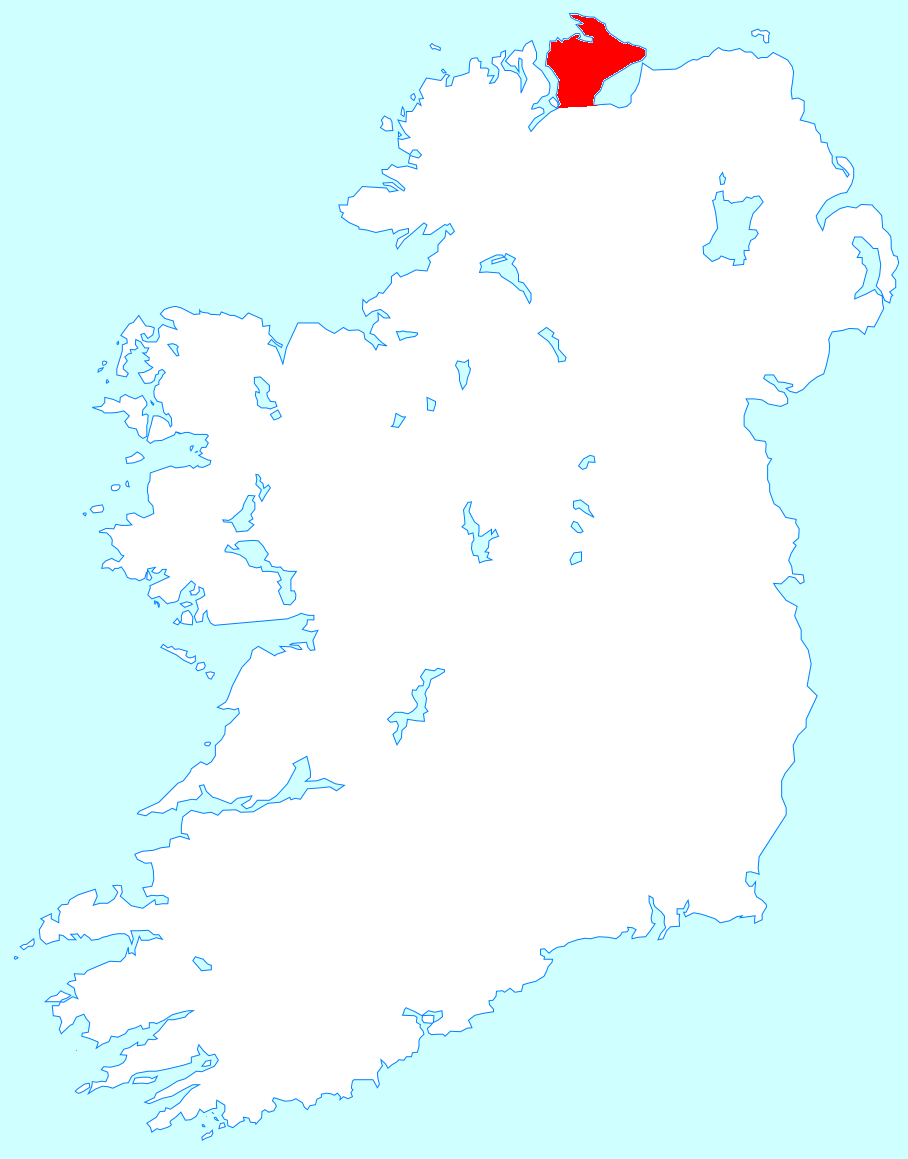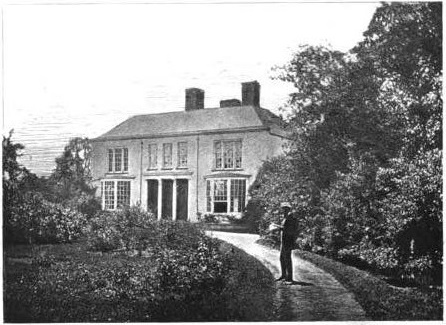|
Tristernagh Abbey
Tristernagh Abbey (, IPA: ˈmˠanʲəʃtʲəɾʲˈhɾʲɪsˠt̪ˠəɾˠn̪ˠiː), also known as the Priory of Kilbixy or Kilbisky, Tristernagh Priory, or the priory of the Blessed Virgin Mary of Tristernagh, is a ruined Augustinian monastery in the townland of Tristernagh in the barony of Kilbixy in County Westmeath, Ireland. It is situated on the shores of Lough Iron, about north east of the village of Ballynacargy. The name "Tristernagh" comes from the Irish ''triostarnach'', "place of thorns". History The priory was founded in c. 1190 by Geoffrey de Costentin and was dedicated to Mary, mother of Jesus. Geoffrey, a Norman settler, had been granted the land by Walter de Lacy, Lord of Meath. There was already an important early church nearby at Kilbixy, dedicated to St Bigseach, which Geoffrey de Costentin subsequently granted to Ralph de Petit, the Archdeacon of Meath.Casey and Rowan ''The Buildings of Ireland: North Leinster'', p.346 The first prior on record was name ... [...More Info...] [...Related Items...] OR: [Wikipedia] [Google] [Baidu] |
Augustinians
Augustinians are members of several religious orders that follow the Rule of Saint Augustine, written about 400 A.D. by Augustine of Hippo. There are two distinct types of Augustinians in Catholic religious orders dating back to the 12th–13th centuries: * Various congregations of Canons Regular also follow the Rule of Saint Augustine, embrace the evangelical counsels and lead a semi-monastic life, while remaining committed to pastoral care appropriate to their primary vocation as priests. They generally form one large community which might serve parishes in the vicinity, and are organized into autonomous congregations. * Several orders of friars who live a mixed religious life of contemplation and apostolic ministry. The largest and most familiar is the Order of Saint Augustine (OSA), founded in 1244 and originally known as the Hermits of Saint Augustine (OESA). They are commonly known as the Austin Friars in England. Two other orders, the Order of Augustinian Recollects ... [...More Info...] [...Related Items...] OR: [Wikipedia] [Google] [Baidu] |
Elizabeth I Of England
Elizabeth I (7 September 153324 March 1603) was Queen of England and Ireland from 17 November 1558 until her death in 1603. She was the last and longest reigning monarch of the House of Tudor. Her eventful reign, and its effect on history and culture, gave name to the Elizabethan era. Elizabeth was the only surviving child of Henry VIII and his second wife, Anne Boleyn. When Elizabeth was two years old, her parents' marriage was annulled, her mother was executed, and Elizabeth was declared illegitimate. Henry restored her to the line of succession when she was 10. After Henry's death in 1547, Elizabeth's younger half-brother Edward VI ruled until his own death in 1553, bequeathing the crown to a Protestant cousin, Lady Jane Grey, and ignoring the claims of his two half-sisters, Mary and Elizabeth, despite statutes to the contrary. Edward's will was quickly set aside and the Catholic Mary became queen, deposing Jane. During Mary's reign, Elizabeth was imprisoned fo ... [...More Info...] [...Related Items...] OR: [Wikipedia] [Google] [Baidu] |
Battle Of Curlew Pass
The Battle of Curlew Pass was fought on 15 August 1599 during the campaign of the Earl of Essex in the Nine Years' War, between an English force under Sir Conyers Clifford and a rebel Irish force led by Aodh Ruadh Ó Domhnaill (Red Hugh O'Donnell). The English were ambushed and routed while marching through a pass in the Curlew Mountains, near the town of Boyle, in the west of Ireland. The English forces suffered heavy casualties. Losses by allied Irish forces were not recorded but were probably minimal. Campaign In April 1599, the 2nd Earl of Essex landed in Ireland with over 17,000 troops and cavalry to put down the rebellion of Hugh O'Neill, and Red Hugh O'Donnell, which had spread from Ulster to all of Ireland. To this end, he supported one of O'Donnell's Irish enemies, Sir Donogh O'Connor (O'Connor Sligo), encouraging him to retake his territories in County Sligo that O'Donnell had occupied. Sligo Town was an excellent advance base, with Ballyshannon 20 miles to the ... [...More Info...] [...Related Items...] OR: [Wikipedia] [Google] [Baidu] |
Hugh Roe O'Donnell
Hugh Roe O'Donnell II (; 20 October 1572 – 30 August 1602), also known as Red Hugh O'Donnell, was an Irish Chief of the Name, clan chief and senior leader of the Irish confederacy during the Nine Years' War (Ireland), Nine Years' War. He was Lord of Tyrconnell from 1592 until his death in 1602. He was born into the powerful O'Donnell dynasty, O'Donnell clan of Tyrconnell (present-day County Donegal). By the age of fourteen, he was recognised as his clan's Tanistry, tanist and engaged to the daughter of the prominent Hugh O'Neill, Earl of Tyrone, Earl of Tyrone. The Dublin Castle administration, English-led Irish government feared that an alliance between Tyrone and the O'Donnell clan would threaten the Crown's control over Ulster, so in 1587 Lord Deputy of Ireland, Lord Deputy John Perrot arranged Hugh Roe's kidnapping. The government subsequently backed regime change in Tyrconnell. After four years' imprisonment in Dublin Castle, Hugh Roe escaped circa January 1592 with the ... [...More Info...] [...Related Items...] OR: [Wikipedia] [Google] [Baidu] |
Cahir O' Doherty
Sir Cahir O'Doherty ( or ; 1587 – 5 July 1608) was the last Gaelic Irish Chief of the Name, chief of the O'Doherty family, O'Doherty clan, who in 1608 launched O'Doherty's rebellion, a failed rebellion against the English crown. O'Doherty was the eldest son of clan chief John O'Doherty, ruler of Inishowen. O'Doherty and his father initially fought for the Irish confederacy in the Nine Years' War (Ireland), Nine Years' War. Following his father's death, his clan became embroiled in a succession dispute. O'Doherty, aged 15, defected to the English and became known as the Queen's O'Doherty for his service on the Crown's side. After the war, O'Doherty had ambitions to become a courtier and applied for a position in the household of Henry Frederick, Prince of Wales, but he increasingly came into dispute with Irish-based officials such as the Viceroy Arthur Chichester, 1st Baron Chichester, Sir Arthur Chichester and the Governor of Derry George Paulet (1553–1608), Sir George Paul ... [...More Info...] [...Related Items...] OR: [Wikipedia] [Google] [Baidu] |
Inishowen
Inishowen () is a peninsula in the north of County Donegal in Ireland. Inishowen is the largest peninsula on the island of Ireland. The Inishowen peninsula includes Ireland's most northerly point, Malin Head. The Grianan of Aileach, a ringfort that served as the royal seat of the over-kingdom of Ailech, stands at the entrance to the peninsula. Towns and villages The main towns and villages of Inishowen are: * Ballyliffin, Buncrana, Bridgend, Burnfoot, Burt * Carndonagh, Carrowmenagh, Clonmany, Culdaff * Dunaff * Fahan * Glengad, Gleneely, Greencastle * Malin, Malin Head, Moville, Muff * Redcastle * Shrove * Quigley's Point * Urris Geography Inishowen is a peninsula of 884.33 square kilometres (218,523 acres), situated in the northernmost part of the island of Ireland. It is bordered to the north by the Atlantic Ocean, to the east by Lough Foyle, and to the west by Lough Swilly. It is joined at the south to the rest of the island and is mostly in County Don ... [...More Info...] [...Related Items...] OR: [Wikipedia] [Google] [Baidu] |
Castle Rackrent
''Castle Rackrent'' is a short novel by Maria Edgeworth published in 1800. Unlike many of her other novels, which were heavily "edited" by her father, Richard Lovell Edgeworth, before their publication, the published version is close to her original intention. Shortly before its publication, an introduction, glossary and footnotes, written in the voice of an English narrator, were added to the original text to blunt the negative impact the Edgeworths feared the book might have on English enthusiasm for the Act of Union 1800. One of the main sources of inspiration for the novel was a chronicle of her own family history called ''The Black Book of Edgeworthstown,'' which contain legal struggles of the Edgeworth's similar to those portrayed in the novel. Plot summary The novel is set prior to the Constitution of 1782. It tells the story of four generations of Rackrent heirs through their steward, Thady Quirk. The heirs are: the dissipated spendthrift Sir Patrick O'Shaughlin, the litig ... [...More Info...] [...Related Items...] OR: [Wikipedia] [Google] [Baidu] |
Maria Edgeworth
Maria Edgeworth (1 January 1768 – 22 May 1849) was a prolific Anglo-Irish novelist of adults' and children's literature. She was one of the first realist writers in children's literature and a significant figure in the evolution of the novel in Europe. She held critical views on estate management, politics, and education, and corresponded with some of the leading literary and economic writers, including Sir Walter Scott and David Ricardo. During the first decade of the 19th century she was one of the most widely read novelists in Britain and Ireland. Her name today is most commonly associated with ''Castle Rackrent'', her first novel, in which she adopted an Irish Catholics, Irish Catholic voice to narrate the dissipation and decline of a family from her own landed Anglo-Irish people, Anglo-Irish class. Life Early life Maria Edgeworth was born in Black Bourton, Oxfordshire. She was the second child of Richard Lovell Edgeworth (who eventually fathered twenty-two surviving child ... [...More Info...] [...Related Items...] OR: [Wikipedia] [Google] [Baidu] |
Gothic Revival Architecture
Gothic Revival (also referred to as Victorian Gothic or neo-Gothic) is an Architectural style, architectural movement that after a gradual build-up beginning in the second half of the 17th century became a widespread movement in the first half of the 19th century, mostly in England. Increasingly serious and learned admirers sought to revive medieval Gothic architecture, intending to complement or even supersede the Neoclassical architecture, neoclassical styles prevalent at the time. Gothic Revival draws upon features of medieval examples, including decorative patterns, finials, lancet windows, and hood moulds. By the middle of the 19th century, Gothic Revival had become the pre-eminent architectural style in the Western world, only to begin to fall out of fashion in the 1880s and early 1890s. For some in England, the Gothic Revival movement had roots that were intertwined with philosophical movements associated with Catholicism and a re-awakening of high church or Anglo-Cathol ... [...More Info...] [...Related Items...] OR: [Wikipedia] [Google] [Baidu] |
James Norris Brewer
James Jupp Norris Brewer (11 September 1777 – March 1839) was an English topographer and novelist. He wrote many romances and topographical compilations, he also contributed to the series called the ''Beauties of England and Wales''. All the former are now forgotten. Life According to the ''Oxford Dictionary of National Biography'' (2004), Brewer "was the eldest son of a merchant of London. He married the daughter of a gentleman at Clapham... Nothing is recorded of his death." From genealogical sources, a little more can be added. Brewer was born in London on 11 September 1777. He was baptised on 8 October 1777 at St Sepulchre Church in Holborn, where his parents James Brewer and Sarah Sparrow had been married on 4 May the previous year. He too would be married at St Sepulchre, to Mary Hanscomb on 27 December 1800; and their son Edward Norris Brewer, who was born on 9 December 1801, was christened there on 7 January 1802. In the meantime it appears the two were involved in ... [...More Info...] [...Related Items...] OR: [Wikipedia] [Google] [Baidu] |
Sir Henry Piers
Sir Henry Piers 1st Baronet (1629–1691), of Tristernagh Abbey, County Westmeath, Ireland was an Anglo-Irish landowner, soldier, Member of Parliament, Sheriff of Counties Longford and Westmeath, Sheriff of St Johnstown, and an antiquarian. Biography Piers was the son of Sir William Piers and Martha, daughter of Sir James Ware and Mary Bryden, and sister of the antiquarian Sir James Ware. cites He was the grandson of Henry Piers and great-grandson of the English naval officer William Piers, who had been granted Tristernagh Abbey by Elizabeth I of England as a reward for military and other services in Ireland. Piers served as a military officer in the 1640s, commanding a company in Colonel Castle's Regiment.Clarke, A. ''Prelude to Restoration in Ireland'', Cambridge UP, p.191 He held the office of Sheriff of Counties Longford and Westmeath in 1657–1658. He was dubbed a knight by Henry Cromwell at Dublin Castle on 30 November 1658 (an honour that passed into oblivion with th ... [...More Info...] [...Related Items...] OR: [Wikipedia] [Google] [Baidu] |
Giovanni Battista Rinuccini
Giovanni Battista Rinuccini (1592–1653) was an Italian Roman Catholic archbishop in the mid-seventeenth century. He was a noted legal scholar and became chamberlain to Pope Gregory XV. In 1625 Pope Urban VIII made him the Archbishop of Fermo in Italy. In 1645 Pope Innocent X sent him to Ireland as Papal Nuncio. He brought money and weapons to help the Confederate Irish in its conflict against the English Parliamentarians. Rinuccini became the dominant figure of the hard-line Clerical Faction of the Confederates refusing the alliance with the Irish Royalists. Early life Rinuccini was born in Rome on 15 September 1592. He was the son of a Florentine patrician, his mother, Virginia di Pier Antonio Bandini was a sister of Cardinal Ottavio Bandini, who was bishop of Ostia and Velletri and dean of the Sacred College of Cardinals. Rinuccini was educated by the Jesuits in Rome and studied law at the Universities of Bologna and Perugia, in due course, he was ordained a ... [...More Info...] [...Related Items...] OR: [Wikipedia] [Google] [Baidu] |






